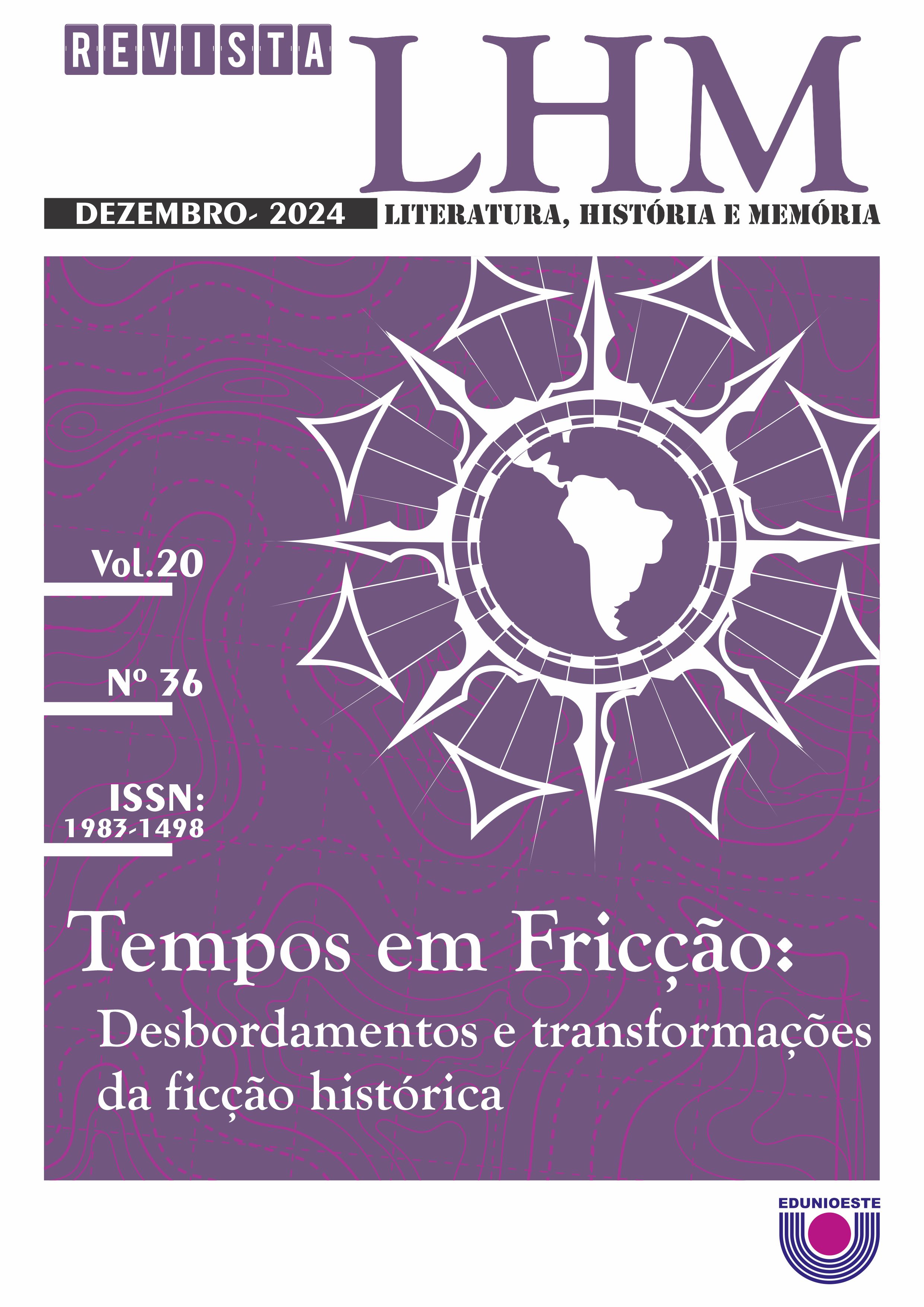Between beauty and horror
the violence represented in the poem “Aquarela”, by Cacaso, and in Adriana Varejão's visceral art
DOI:
https://doi.org/10.48075/rlhm.v20i36.33948Abstract
This paper aims to propose a comparative analysis between the poem Aquarela by Antônio Carlos de Brito (Cacaso) (1944-1987) and the visceral art of Adriana Varejão. In particular, to highlight the similarities in the representation of violence in brazilian history, specifically in the Military Dictatorship and the colonial period, in the use of the border between beauty and horror marked in their artistic expressions. To this end, using comparative methodology, which is committed to finding intersections between the chosen works, linking the areas of literature and art, the work relies on the bibliographic contribution of researchers such as Debora R. Soares (2009), Jaime Ginzburg (2017), Jeanne Marie Gagnebin (2006), Jonatas A. Guimarães (2012), LurdiBlauth e Silva (2021), Nelson Martinelli Filho (2020), among others. Based on the similarities between the poem and the selected plastic art, which use elements that refer to both beauty and horror, the research highlights the trauma and pain of the tortured bodies and their scattered viscera, which occurred during these violent periods, which stained brazilian history. In addition, the article reflects on the contribution of the artists' art to denouncing the violence and preserving national memory.
Downloads
Published
How to Cite
Issue
Section
License

This work is licensed under a Creative Commons Attribution-NonCommercial-ShareAlike 4.0 International License.
Aviso de Direito Autoral Creative Commons
Política para Periódicos de Acesso Livre
Autores que publicam nesta revista concordam com os seguintes termos:
1. Autores mantém os direitos autorais e concedem à revista o direito de primeira publicação, com o trabalho simultaneamente licenciado sob a Licença Creative Commons Attribution que permite o compartilhamento do trabalho com reconhecimento da autoria e publicação inicial nesta revista.2. Autores têm autorização para assumir contratos adicionais separadamente, para distribuição não-exclusiva da versão do trabalho publicada nesta revista (ex.: publicar em repositório institucional ou como capítulo de livro), com reconhecimento de autoria e publicação inicial nesta revista.
3. Autores têm permissão e são estimulados a publicar e distribuir seu trabalho online (ex.: em repositórios institucionais ou na sua página pessoal) a qualquer ponto antes ou durante o processo editorial, já que isso pode gerar alterações produtivas, bem como aumentar o impacto e a citação do trabalho publicado (Veja O Efeito do Acesso Livre).
Licença Creative Commons
Esta obra está licenciada com uma Licença Creative Commons Atribuição-NãoComercial-CompartilhaIgual 4.0 Internacional, o que permite compartilhar, copiar, distribuir, exibir, reproduzir, a totalidade ou partes desde que não tenha objetivo comercial e sejam citados os autores e a fonte.


